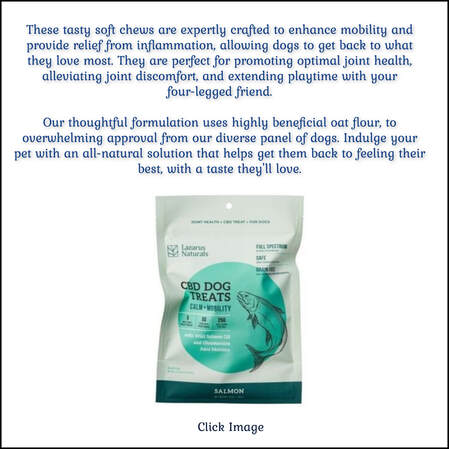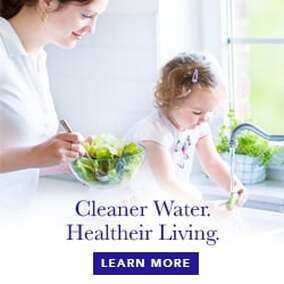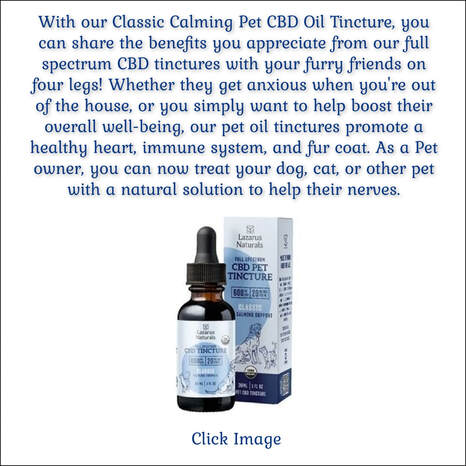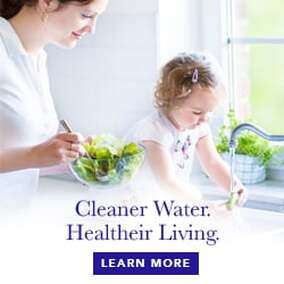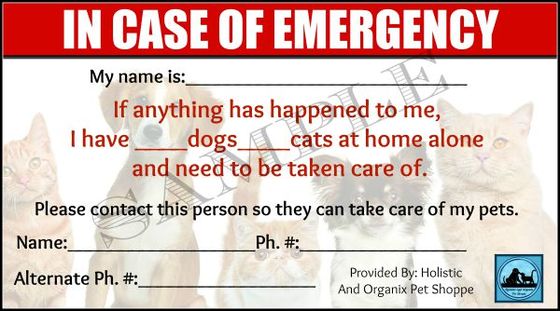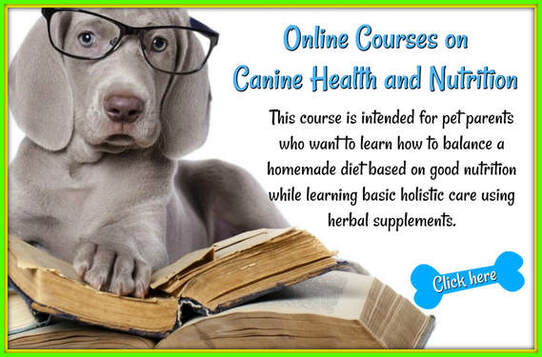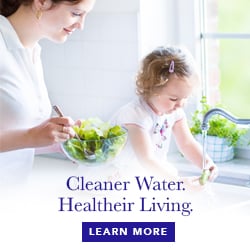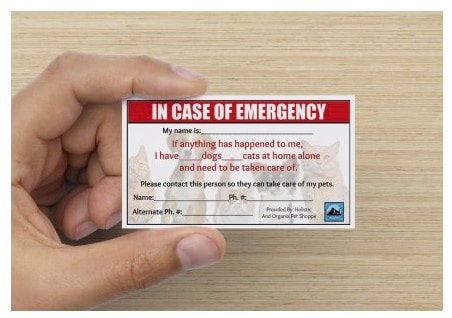What’s Cookin’? Ever Wonder What Happens to Dead Animals? A Look at Baltimore’s Only Remaining Rendering Plant Explains
By Van Smith
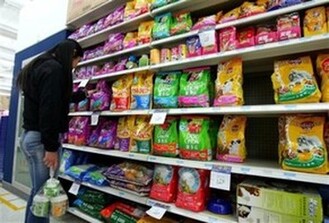
By Goodness Gracious Treats
NOTE: What appears below is an electronic version of an article written by Van Smith and appearing in Baltimore’s City Paper on September 15, 1995. It highlights the practice of rendering roadkill, decayed animal materials, euthanized pets and wildlife from the city shelter, and even Pimlico’s race track into ingredients sold to Purina, Alpo (now a Purina brand), and Heinz. (Heinz’s pet product division now belongs to Del Monte.) An image of the original article can be found online.
Consider these items: Bozman, the Baltimore City Police Department quarter horse who died last summer in the line of duty. The grill grease and used frying oil from Camden Yards, the city’s summer ethnic festivals, and nearly all Baltimore-area and Ocean City restaurants and hotels. A baby circus elephant who died while in Baltimore this summer. Millions of tons of waste meat and inedible animal parts from the region’s supermarkets and slaughterhouses. Carcasses from the Baltimore Zoo. The thousands of dead dogs, cats, raccoons, possums, deer, foxes, snakes, and the rest that local animal shelters and road-kill patrols must dispose of each month.
NOTE: What appears below is an electronic version of an article written by Van Smith and appearing in Baltimore’s City Paper on September 15, 1995. It highlights the practice of rendering roadkill, decayed animal materials, euthanized pets and wildlife from the city shelter, and even Pimlico’s race track into ingredients sold to Purina, Alpo (now a Purina brand), and Heinz. (Heinz’s pet product division now belongs to Del Monte.) An image of the original article can be found online.
Consider these items: Bozman, the Baltimore City Police Department quarter horse who died last summer in the line of duty. The grill grease and used frying oil from Camden Yards, the city’s summer ethnic festivals, and nearly all Baltimore-area and Ocean City restaurants and hotels. A baby circus elephant who died while in Baltimore this summer. Millions of tons of waste meat and inedible animal parts from the region’s supermarkets and slaughterhouses. Carcasses from the Baltimore Zoo. The thousands of dead dogs, cats, raccoons, possums, deer, foxes, snakes, and the rest that local animal shelters and road-kill patrols must dispose of each month.
These are the raw materials of Baltimore’s fat-and-protein economy, which are processed into re-marketable products for high profit at the region’s only rendering plant, in Curtis Bay.
In a gruesomely ironic twist, most inedible dead-animal parts, including dead pets, end up in feed used to fatten up future generations of their kind. Others are transmogrified into paint, car wax, rubber, and industrial lubricants. Until the mid-1980's, some of the plant’s products were used in soap and cosmetics as well.
Like the use of human placenta in cosmetics and eating Rocky Mountain oysters, rendering is a phenomenon that many have heard of but few are tempted to ponder. Unlike those odd human practices, though, rendering answers a vital societal question: What to do with the prodigious amounts of carrion, offal, and fat that our society leaves in its dietary wake? Rather than classifying it as foul waste and incinerating it or burying it in a landfill, why not cook it into its constituent parts – fat and protein – and make a pretty penny doing it?
In a gruesomely ironic twist, most inedible dead-animal parts, including dead pets, end up in feed used to fatten up future generations of their kind. Others are transmogrified into paint, car wax, rubber, and industrial lubricants. Until the mid-1980's, some of the plant’s products were used in soap and cosmetics as well.
Like the use of human placenta in cosmetics and eating Rocky Mountain oysters, rendering is a phenomenon that many have heard of but few are tempted to ponder. Unlike those odd human practices, though, rendering answers a vital societal question: What to do with the prodigious amounts of carrion, offal, and fat that our society leaves in its dietary wake? Rather than classifying it as foul waste and incinerating it or burying it in a landfill, why not cook it into its constituent parts – fat and protein – and make a pretty penny doing it?
Valley Proteins does. The Winchester, Virginia-based company owns and runs Baltimore’s only rendering plant, tucked along the grassy shores of Cabin Branch, a tributary of Curtis Bay in the extreme southern tip of the city. Although a few out-of-state rendering plants attempt to compete in Baltimore, Valley Proteins’ Curtis Bay plant has a regional lock on the profitable recycling of dead animal matter and kitchen grease into ingredients for feed and industrial products.
Based on estimates from Neil Gagnon, general manager of the Curtis Bay plant, about 150 million pounds of rotting flesh and used kitchen grease from around Baltimore are fed into the plant’s grinders and cookers each year, resulting in about 80 million pounds of the plant’s three products: meat and bone meal, tallow, and yellow grease. Most is reconstituted as chicken feed for North Carolina and Eastern Shore poultry farmers. Some goes for dry pet food. And some of the tallow is used by chemical “splitters,” who turn the fat into fatty acids, which in turn are used in thousands of products.
Based on estimates from Neil Gagnon, general manager of the Curtis Bay plant, about 150 million pounds of rotting flesh and used kitchen grease from around Baltimore are fed into the plant’s grinders and cookers each year, resulting in about 80 million pounds of the plant’s three products: meat and bone meal, tallow, and yellow grease. Most is reconstituted as chicken feed for North Carolina and Eastern Shore poultry farmers. Some goes for dry pet food. And some of the tallow is used by chemical “splitters,” who turn the fat into fatty acids, which in turn are used in thousands of products.
|
During a midsummer day’s visit to the plant, I gag upon first contact with the hot, putrescent air. My throat immediately becomes coated with the suety taste of decayed, frying flesh.
“You picked a bad day to visit a rendering plant,” Gagnon says, emphasizing the effect of the summer heat by describing the typical state of the “deadstock” picked up from Pimlico Race Course, which is delivered to Valley Proteins’ pet-food operations in Pennsylvania. “By the time we get them, they’re soup,” he says. “Summertime is bad around here.” |
Gagnon himself is far from offended by the overwhelming miasma, though. “It smells like money to me,” he likes to say. Later in the visit, back in his office, he estimates Valley Proteins’ profit margin at somewhere in the neighborhood of 30 percent.
A load of guts, heads, and legs, recently retrieved from a local slaughterhouse, sits stewing in one of the raw-materials bins at the plant’s receiving bay. “That’s very fresh offal,” Gagnon says.
A load of guts, heads, and legs, recently retrieved from a local slaughterhouse, sits stewing in one of the raw-materials bins at the plant’s receiving bay. “That’s very fresh offal,” Gagnon says.
He explains how it will be fed into “the hogger,” a shredder that grinds up the tissues and filters out trash, before it is deep-fried in cookers charged with spent restaurant grease and blood.
After being thoroughly fried, the solid protein is centrifuged, pressed, run through a magnet to remove metals, ground up, sifted, cooled, and stored in a silo. Today mid-way through the process, cooker operator Bud Kellner smiles, grabs a warm, brown, fibrous thatch of cooked tissues out of the production line in the cook room and shouts out above the mechanical din: “That’s all protein material! I could eat that right now!”
The liquid fat is cleaned, filtered, cooled, and stored in five tanks – two for tallow, a higher-grade fat product, and three for yellow grease. Kellner doesn’t mention whether he considers the fat potable.
The rendering processes at Valley Proteins’ Curtis Bay plant create three byproducts: waste water, which goes into the city’ Patapsco Waste Water Treatment Plant at nearby Wagners Point; the stray fat and protein molecules in the air that generate the plant’s horrid stench; and reclaimed dirt, metal, plastics, and other trash, which go to the nearby Quarantine Road Landfill. Two boilers, which jointly generate 2,000 horsepower, run the whole operation.
After being thoroughly fried, the solid protein is centrifuged, pressed, run through a magnet to remove metals, ground up, sifted, cooled, and stored in a silo. Today mid-way through the process, cooker operator Bud Kellner smiles, grabs a warm, brown, fibrous thatch of cooked tissues out of the production line in the cook room and shouts out above the mechanical din: “That’s all protein material! I could eat that right now!”
The liquid fat is cleaned, filtered, cooled, and stored in five tanks – two for tallow, a higher-grade fat product, and three for yellow grease. Kellner doesn’t mention whether he considers the fat potable.
The rendering processes at Valley Proteins’ Curtis Bay plant create three byproducts: waste water, which goes into the city’ Patapsco Waste Water Treatment Plant at nearby Wagners Point; the stray fat and protein molecules in the air that generate the plant’s horrid stench; and reclaimed dirt, metal, plastics, and other trash, which go to the nearby Quarantine Road Landfill. Two boilers, which jointly generate 2,000 horsepower, run the whole operation.
While waiting at the receiving bay to watch another truckload of offal (this one from Baltimore County slaughterer J.W. Treuth & Sons, Inc.) tumble into a raw-materials bin, Kellner sums up why rendering is important. “If it don’t go here, it’d be laying on the side of the street somewhere.”
Blood and body fluids leak out from under the trailer gate. “Cranberry juice,” Gagnon remarks as we gaze at the repulsive pale-red effluvium. Suddenly a hot gust of wind blows droplets of it on our bare legs. As the bloated stomachs and broken body parts slide en masse from the trailer bed to the bin, Bud shouts out, “Watch out for the splatter!” After the load is delivered, a single jawbone rest on the pavement amid the bloody-liquid. Bud adds a final piece of sage advice, “Make sure you take a shower.”
Valley Proteins didn’t always have a virtual monopoly over the rendering business in Baltimore. In 1927, The National Provisioner, a meat-industry newsletter, published a map and list showing the geographical distribution of the nation’s renderers and slaughterhouses. At that time, Baltimore had 15 of Maryland’s 21 rendering plants, and there were 913 plants in the nation.
Blood and body fluids leak out from under the trailer gate. “Cranberry juice,” Gagnon remarks as we gaze at the repulsive pale-red effluvium. Suddenly a hot gust of wind blows droplets of it on our bare legs. As the bloated stomachs and broken body parts slide en masse from the trailer bed to the bin, Bud shouts out, “Watch out for the splatter!” After the load is delivered, a single jawbone rest on the pavement amid the bloody-liquid. Bud adds a final piece of sage advice, “Make sure you take a shower.”
Valley Proteins didn’t always have a virtual monopoly over the rendering business in Baltimore. In 1927, The National Provisioner, a meat-industry newsletter, published a map and list showing the geographical distribution of the nation’s renderers and slaughterhouses. At that time, Baltimore had 15 of Maryland’s 21 rendering plants, and there were 913 plants in the nation.
Today, according to Gagnon, Baltimore has one of the state’s six to 10 plants, which are concentrated on the Eastern Shore to serve the poultry industry. The nationwide figure has dropped to 286, according to Gary G. Pearl of the Fats and Oils Research Foundation. (Affiliated with the National Renderers Association, the foundation supports “increased utilization and new uses for products that are produced with the 50 percent of the animal that is not acceptable for human consumption,” Pearl says.)
Valley Proteins’ eight plants draw raw materials from the entire mid-Atlantic region, according to J.J. Smith, president of the company. Smith describes the company’s territory as “from Newark [New Jersey] to Savannah [Georgia], and 300 miles inland.” Its three-generation mini empire began in 1949 with company patriarch Clyde Smith’s buyout of an existing plant in Winchester, Virginia.
According to Baltimore City land records, Valley Proteins purchased the Curtis Bay plant in 1984 for $2 million from Benedict K. Hudson, president of another rendering company, Kavanaugh Products, which had purchased the property in the 1960s. Five of Valley Proteins’ eight plants were originally owned by other renderers, Gagnon says.
J.J. Smith says the industry’s trend toward concentration of ownership picked up momentum about 20 or 30 years ago with the creation of a market for “boxed beef.”
Valley Proteins’ eight plants draw raw materials from the entire mid-Atlantic region, according to J.J. Smith, president of the company. Smith describes the company’s territory as “from Newark [New Jersey] to Savannah [Georgia], and 300 miles inland.” Its three-generation mini empire began in 1949 with company patriarch Clyde Smith’s buyout of an existing plant in Winchester, Virginia.
According to Baltimore City land records, Valley Proteins purchased the Curtis Bay plant in 1984 for $2 million from Benedict K. Hudson, president of another rendering company, Kavanaugh Products, which had purchased the property in the 1960s. Five of Valley Proteins’ eight plants were originally owned by other renderers, Gagnon says.
J.J. Smith says the industry’s trend toward concentration of ownership picked up momentum about 20 or 30 years ago with the creation of a market for “boxed beef.”
“Whereas cattle used to be sent to market in halves or quarters, and every community had its own slaughter facilities,” the company president explains, “now the slaughtering is consolidated in the Midwest, and they ship [the meat] out in boxes of 20- or 25-pound chunks.”
Boxed beef reduced the need for the neighborhood slaughterhouse, or abattoir. According to Smith, “a new movement toward close-trim meat and tray-ready beef” similarly is eliminating the need for butchers and meat cutters in supermarkets because even more of the meat preparation occurs in Midwest slaughter plants.
“Baltimore used to have abattoirs all over the place,” Smith says. Now Baltimore City has only one, a kosher slaughterhouse in the Penn-North area.
Boxed beef reduced the need for the neighborhood slaughterhouse, or abattoir. According to Smith, “a new movement toward close-trim meat and tray-ready beef” similarly is eliminating the need for butchers and meat cutters in supermarkets because even more of the meat preparation occurs in Midwest slaughter plants.
“Baltimore used to have abattoirs all over the place,” Smith says. Now Baltimore City has only one, a kosher slaughterhouse in the Penn-North area.
|
The 1927 Biennial Census of Manufactures, cited in the 1929 industry classic Inedible Animal Fats in the United States by Food Research Institute economist L.B. Zapoleon, indicates there were 40 slaughterers and meat packers in Baltimore at that time.
The decline of Baltimore’s slaughterers and butchers has meant less raw material for rendering. |
“In 1965, at any given supermarket, we used to pick up [waste meat] three to five times a week at 1,000 pounds each. Now we do it once a week at 600 pounds,” Smith says. That’s an 80 to 90 percent drop in volume, and, as Smith often points out, “volume is what we thrive on in this business.”
Thirty years ago, according to Smith, 85 to 90 percent of renderers’ materials came from supermarkets and slaughterhouses. Today, he estimates that a little more than half of the raw material for the Curtis Bay plant is from those sources. The other half is kitchen grease and frying oils from restaurants, the proliferation of which he believes has made up for about a third of the loss resulting from the boxed-beef phenomenon.
“People used to eat at home more often,” Smith says. “But now there are many, many restaurants, and people eat out all the time, so there has been an explosive growth at that level over the last 30 or 40 years.”
During this same period, the industry also underwent a technology shift. In 1965, Dupps, a Germantown, Ohio, equipment manufacturer, started to make “continuous cookers,” which quickly replaced “batch cookers’” as the industry standard.
Batch cookers restricted the rate of processing because after each batch was cooked the cookers had to be emptied and prepared for the next load. Continuous cookers made nonstop rendering possible, and the quantities the plants could handle grew greater over the ensuing years. Today Dupps makes a continuous cooker that can handle the equivalent of 22 batch cookers, according to Smith.
Thirty years ago, according to Smith, 85 to 90 percent of renderers’ materials came from supermarkets and slaughterhouses. Today, he estimates that a little more than half of the raw material for the Curtis Bay plant is from those sources. The other half is kitchen grease and frying oils from restaurants, the proliferation of which he believes has made up for about a third of the loss resulting from the boxed-beef phenomenon.
“People used to eat at home more often,” Smith says. “But now there are many, many restaurants, and people eat out all the time, so there has been an explosive growth at that level over the last 30 or 40 years.”
During this same period, the industry also underwent a technology shift. In 1965, Dupps, a Germantown, Ohio, equipment manufacturer, started to make “continuous cookers,” which quickly replaced “batch cookers’” as the industry standard.
Batch cookers restricted the rate of processing because after each batch was cooked the cookers had to be emptied and prepared for the next load. Continuous cookers made nonstop rendering possible, and the quantities the plants could handle grew greater over the ensuing years. Today Dupps makes a continuous cooker that can handle the equivalent of 22 batch cookers, according to Smith.
“The change in technology was not a matter of new ways to cook,” Smith explains. “It was a matter of bigger and bigger scales. It was more efficient, but it was also more competitive for raw material.”
In Baltimore’s rendering industry, lower volumes of meat-packing and supermarket waste and higher production capacities combined with another factor – the dramatic rise of the poultry industry – to spell an end to all but one plant in the region. Baltimore was a red-meat-packing town caught completely off guard by the continuing surge in chicken consumption, which began about 20 years ago.
“There were very few poultry-eviscerating plants in the 1960s,” Smith says. But as the poultry industry expanded in the South and on Maryland’s Eastern Shore, those regions’ need for rendering increased. Baltimore City, meanwhile, was left with closed-down meat-packing plants, slaughterhouses, and rendering plants. Only one of each remains.
Finally, the proliferation of environmental regulations has further encouraged ownership concentration in the rendering business. “Environmental requirements got expensive, so it became a trend to sell out to competitors who can handle the changes,” Smith explains. For the remaining firms, he says, increased regulation “was a two-edged sword. It was expensive because it required high capital investments, but it was also a barrier for a startup company to compete with you.”
In Baltimore’s rendering industry, lower volumes of meat-packing and supermarket waste and higher production capacities combined with another factor – the dramatic rise of the poultry industry – to spell an end to all but one plant in the region. Baltimore was a red-meat-packing town caught completely off guard by the continuing surge in chicken consumption, which began about 20 years ago.
“There were very few poultry-eviscerating plants in the 1960s,” Smith says. But as the poultry industry expanded in the South and on Maryland’s Eastern Shore, those regions’ need for rendering increased. Baltimore City, meanwhile, was left with closed-down meat-packing plants, slaughterhouses, and rendering plants. Only one of each remains.
Finally, the proliferation of environmental regulations has further encouraged ownership concentration in the rendering business. “Environmental requirements got expensive, so it became a trend to sell out to competitors who can handle the changes,” Smith explains. For the remaining firms, he says, increased regulation “was a two-edged sword. It was expensive because it required high capital investments, but it was also a barrier for a startup company to compete with you.”
The changes amount to a classic case of “the bigger fish swallows the smaller fish,” Smith says. Pearl of the Fats and Oils Research Foundation agrees: “The general rule has been fewer and larger, with individual plants covering larger geographic areas and the investment per plant becoming much greater in order to meet environmental and water-quality standards.”
The use of dead pets, work animals, and wildlife as raw material is an aspect of the rendering business that neither Gagnon, Smith, nor Pearl likes to discuss. When they do address it, they emphasize its limited role and contend it is more a public service than a profitable practice.
“This is a very small part of the business that we don’t like to advertise,” Smith says. His main worry is bad publicity from animal-rights activists, who complain about the use of animal corpses for profit.
“We provide that as a service, not for profit, he says, pointing out that “there is not a lot of protein and fat” in dead pets and wildlife, “just a lot of hair you have to deal with somehow.” Smith believes that “shaming the American public into taking care of their pets is the way to combat the problem the animal-rights people talk about, not hassling the companies that manage the waste the pet industry produces in terms of dead animals.”
Smith says that while Valley Proteins sells inedible animal parts and rendered material to Alpo, Heinz, and Ralston-Purina, among other pet-food makers, dead-pet products are not among the products sold to these companies. “They are all very sensitive to the recycled-pet potential,” he explains. “They want no pets in the food they sell. We guarantee them that the product we sell to them does not come from the pets we collect. We handle them separately.”
The use of dead pets, work animals, and wildlife as raw material is an aspect of the rendering business that neither Gagnon, Smith, nor Pearl likes to discuss. When they do address it, they emphasize its limited role and contend it is more a public service than a profitable practice.
“This is a very small part of the business that we don’t like to advertise,” Smith says. His main worry is bad publicity from animal-rights activists, who complain about the use of animal corpses for profit.
“We provide that as a service, not for profit, he says, pointing out that “there is not a lot of protein and fat” in dead pets and wildlife, “just a lot of hair you have to deal with somehow.” Smith believes that “shaming the American public into taking care of their pets is the way to combat the problem the animal-rights people talk about, not hassling the companies that manage the waste the pet industry produces in terms of dead animals.”
Smith says that while Valley Proteins sells inedible animal parts and rendered material to Alpo, Heinz, and Ralston-Purina, among other pet-food makers, dead-pet products are not among the products sold to these companies. “They are all very sensitive to the recycled-pet potential,” he explains. “They want no pets in the food they sell. We guarantee them that the product we sell to them does not come from the pets we collect. We handle them separately.”
A tiny amount of pet byproducts does get into the material sold to pet-food makers, however, according to plant general manager, Gagnon. Valley Proteins does have two production lines: one that uses only clean, fresh fat and bones from supermarkets and butcher shops and another that includes the use of dead pets and wildlife. However, the protein material is a mix from both production lines. Thus the meat and bone meal made at the plant includes materials from pets and wildlife, and about five percent of that product goes to dry-pet-food manufacturers, Gagnon says.
The higher end production line – the one without pets – makes tallow, fats whose “light colors give good consumer appeal,” Smith says. The low-end line makes yellow grease, which goes mostly for poultry and swine feed; as Smith notes, “the chicken doesn’t give a shit what it’s eating.” Local feed makers that buy Valley Proteins’ products include Southern States in Locust Point. Gagnon says there are no longer any local purchasers of the plant’s tallow products.
Most of the dead pets that end up in Valley Proteins’ Curtis Bay plant originate from the city animal shelter in Southwest Baltimore. Earl Watson, administrator of the city Health Department’s Animal Control Division, is very aware of the use of dead pets and wildlife in Baltimore’s fat-and-protein economy, and he knows Valley Proteins’ overarching role in it. “Anywhere there are dead animals, they pick them up,” he says. “They have a monopoly on that because no one else does it. That means they can charge what they want for the service.”
The higher end production line – the one without pets – makes tallow, fats whose “light colors give good consumer appeal,” Smith says. The low-end line makes yellow grease, which goes mostly for poultry and swine feed; as Smith notes, “the chicken doesn’t give a shit what it’s eating.” Local feed makers that buy Valley Proteins’ products include Southern States in Locust Point. Gagnon says there are no longer any local purchasers of the plant’s tallow products.
Most of the dead pets that end up in Valley Proteins’ Curtis Bay plant originate from the city animal shelter in Southwest Baltimore. Earl Watson, administrator of the city Health Department’s Animal Control Division, is very aware of the use of dead pets and wildlife in Baltimore’s fat-and-protein economy, and he knows Valley Proteins’ overarching role in it. “Anywhere there are dead animals, they pick them up,” he says. “They have a monopoly on that because no one else does it. That means they can charge what they want for the service.”
An average of 1,824 dead animals per month pass through the freezer at the city animal shelter and onto trucks bound for Valley Proteins’ Curtis Bay plant, according to shelter statistics for April, May, and June of this year. Most of them were euthanized (three-month average: 1,339), though many were DOAs (three month average: 485). (DOA’s went up significantly in July and August, with 655 and 815 respectively, because of the hot weather and the city’s Clean Sweep program that targeted specific areas for cleanup.)
Here at the animal shelter, a staff of 10 wardens works every day but Sunday, picking up animals and bringing them to the shelter, while the shelter’s two veterinary technicians euthanize animals to make room for the newcomers.
“Having to euthanize animals all day is not pleasant,” Watson says, “especially if you like animals.” He and shelter attendant Edward Rigney lead the way to Room 162 – Euthanasia – and Watson bows out after Rigney pulls open the door to the freezer, in which a dead fox lies stretched out on a table surrounded by barrels filled mostly with dead dogs and cats. Fleas leap among the carcasses.
“Ten or 12 were euthanized this morning,” Rigney says. “Sometimes it’s thirtysome that get it. “Things get backed up over the holidays.”
Here at the animal shelter, a staff of 10 wardens works every day but Sunday, picking up animals and bringing them to the shelter, while the shelter’s two veterinary technicians euthanize animals to make room for the newcomers.
“Having to euthanize animals all day is not pleasant,” Watson says, “especially if you like animals.” He and shelter attendant Edward Rigney lead the way to Room 162 – Euthanasia – and Watson bows out after Rigney pulls open the door to the freezer, in which a dead fox lies stretched out on a table surrounded by barrels filled mostly with dead dogs and cats. Fleas leap among the carcasses.
“Ten or 12 were euthanized this morning,” Rigney says. “Sometimes it’s thirtysome that get it. “Things get backed up over the holidays.”
Outside the freezer, atop another table, lie a bottle of the poison product Fatal-Plus, several syringes, a medical-waste container, and a hacksaw resting on a towel. The hacksaw is for rabies testing: “When people get bit, we have to cut the dogs’ heads off and test their brains,” Rigney explains, adding that the veterinary technician “never uses that – she just twists them off.” Fatal-Plus is sodium pentobarbital; the warning label reads: “Do not use in animals intended for food.” This warning apparently does not apply for animals intended for pet food which is where the protein from these euthanized animals ends up.
Following Valley Proteins route driver Milton McCroy on his rounds is a colorful tour of Baltimore’s fat and protein sources. Every Monday, Wednesday, and Friday, McCroy enters the STAFF & DELIVERIES entrance of the city animal shelter and loads dead animals into his truck. He then continues his rounds to Parks Sausage, the city’s lone remaining meat-packing plant, where he picks up waste meat, and to the slaughterhouse in Penn-North, where he loads up with offal, before taking the shipment back to the Curtis Bay plant and dumping it in the raw materials bin.
“It’s a dirty, smelly job, yeah – but that’s all it is, dirty and smelly,” he say philosophically, leaving someone wondering what could be worse.
Following Valley Proteins route driver Milton McCroy on his rounds is a colorful tour of Baltimore’s fat and protein sources. Every Monday, Wednesday, and Friday, McCroy enters the STAFF & DELIVERIES entrance of the city animal shelter and loads dead animals into his truck. He then continues his rounds to Parks Sausage, the city’s lone remaining meat-packing plant, where he picks up waste meat, and to the slaughterhouse in Penn-North, where he loads up with offal, before taking the shipment back to the Curtis Bay plant and dumping it in the raw materials bin.
“It’s a dirty, smelly job, yeah – but that’s all it is, dirty and smelly,” he say philosophically, leaving someone wondering what could be worse.
At the animal shelter, McCroy hefts two dogs stiffened by rigor mortis into the trailer of his truck, which is rigged for the rendering business with a lift, a catwalk, and a barrel cleaner. He then empties and cleans 11 barrels of assorted animals. As he works, he describes where his load is bound. “Chicken feed, cosmetics, fertilizer, dog food, whatever – the way they cook that bad boy [the Curtis Bay plant] up, it don’t make no difference what’s in there,” he says, then pauses and adds: “When they start putting human bodies in there, that’s when I quit.”
After a brief stop at Parks Sausage, where McCroy empties 10 or so barrels of rancid meat and grease, he heads off to the slaughterhouse, next to a long-defunct animal-hospital building. He backs the truck up to a storage shed, hauls a bloated sheep carcass onto the lift, and dumps it in the trailer, then starts preparing to empty many barrels full of heads, legs, hides, and guts. Joking, he starts to make the jaws of a cow’s head clack, then gives up on the puppet how. He hoists two sheep’s heads in the air, one in each hand, and asks, “Which one do you want?” He punctures a stomach with a pocket knife and squeezes out the brown ooze inside.
The jocularity ends when the plant’s owner catches wind that the press has entered the property. As we explain that we are following McCroy on his run for a story on rendering, he ushers us off to the adjacent sidewalk. “With all our problems with OSHA [Occupational Safety and Health Administration], MOSHA [Maryland OSHA], EPA [Environmental Protection Agency], and the rest, there just is no good publicity for us right now,” he explains.
After a brief stop at Parks Sausage, where McCroy empties 10 or so barrels of rancid meat and grease, he heads off to the slaughterhouse, next to a long-defunct animal-hospital building. He backs the truck up to a storage shed, hauls a bloated sheep carcass onto the lift, and dumps it in the trailer, then starts preparing to empty many barrels full of heads, legs, hides, and guts. Joking, he starts to make the jaws of a cow’s head clack, then gives up on the puppet how. He hoists two sheep’s heads in the air, one in each hand, and asks, “Which one do you want?” He punctures a stomach with a pocket knife and squeezes out the brown ooze inside.
The jocularity ends when the plant’s owner catches wind that the press has entered the property. As we explain that we are following McCroy on his run for a story on rendering, he ushers us off to the adjacent sidewalk. “With all our problems with OSHA [Occupational Safety and Health Administration], MOSHA [Maryland OSHA], EPA [Environmental Protection Agency], and the rest, there just is no good publicity for us right now,” he explains.
A plant employee explained later that tightening environmental regulations and concerns about the bacteria E. coli are coming down hard on slaughterhouses; any attention would just mean more problems. (A subsequent check with state and local regulators did not reveal any outstanding cases or suspected violations at the city slaughterhouse.) Disappointed in being shunted from the property, we leave without a proper good-bye to the good-natured McCroy.
Baltimore’s fat-and-protein economy has changed dramatically over the decades, but it remains essentially a profitable form of recycling. The National Renderers Association sums up the industry nicely in its 12-minute video, Food for Life.
The rendering industry provides many needed services to the community at large; it safely recycles materials that otherwise would be a nightmare to dispose of; it creates products that are essential to modern life; it provides the needed nutrition for our livestock and fisheries, so that a hungry world can be efficiently fed; and it supplies our pets with a healthy diet for longer, better lives.
So the next time you much on fast-food fries (often cooked in grease the restaurants subsequently sell to Valley Proteins) or let your unneutered pet roam the city streets and backyards, or apply a little makeup to your face, or wax your car, or barbecue some chicken breasts, pause a second to think: Is this somehow connected to the Valley Proteins rendering plant in Curtis Bay, either on the donating or receiving end? Chances are, it is.
Baltimore’s fat-and-protein economy has changed dramatically over the decades, but it remains essentially a profitable form of recycling. The National Renderers Association sums up the industry nicely in its 12-minute video, Food for Life.
The rendering industry provides many needed services to the community at large; it safely recycles materials that otherwise would be a nightmare to dispose of; it creates products that are essential to modern life; it provides the needed nutrition for our livestock and fisheries, so that a hungry world can be efficiently fed; and it supplies our pets with a healthy diet for longer, better lives.
So the next time you much on fast-food fries (often cooked in grease the restaurants subsequently sell to Valley Proteins) or let your unneutered pet roam the city streets and backyards, or apply a little makeup to your face, or wax your car, or barbecue some chicken breasts, pause a second to think: Is this somehow connected to the Valley Proteins rendering plant in Curtis Bay, either on the donating or receiving end? Chances are, it is.


